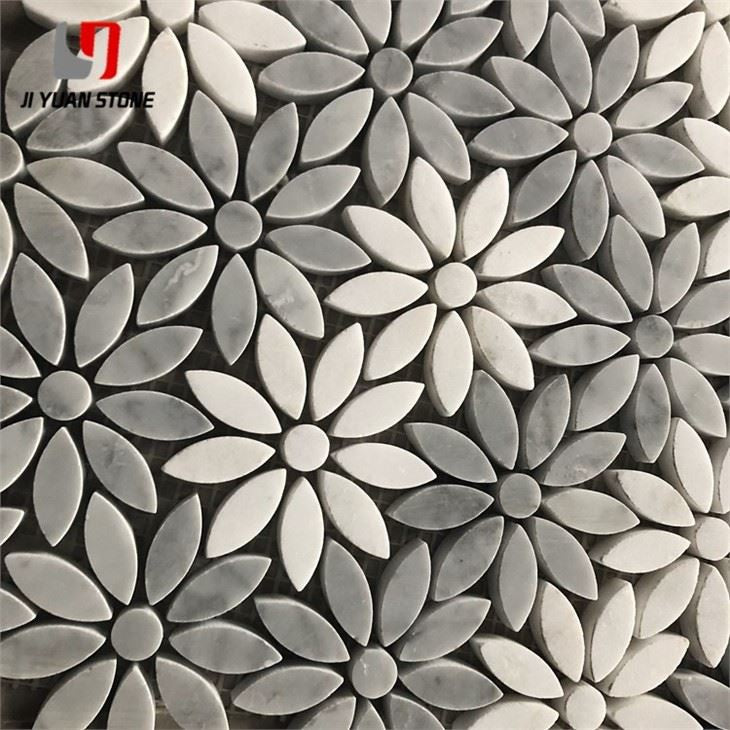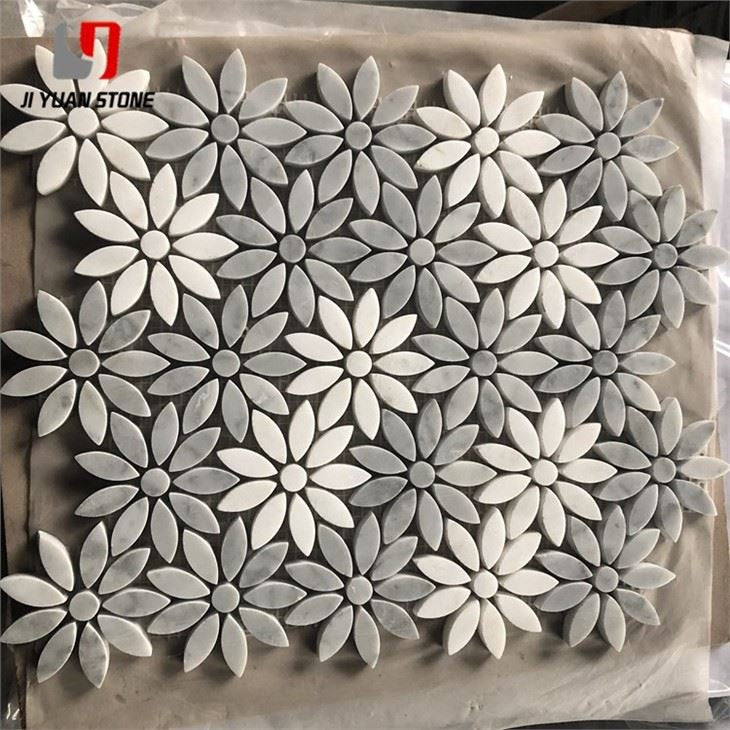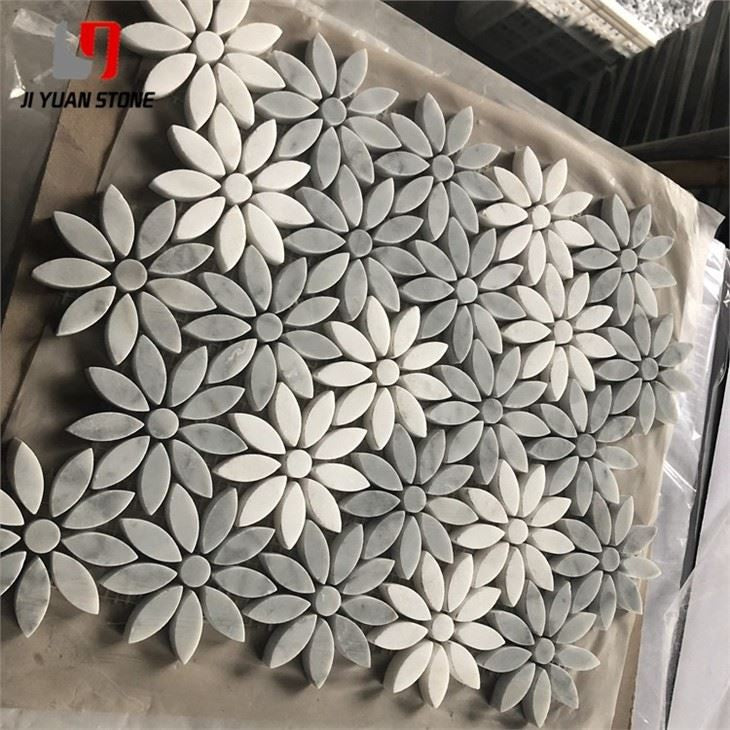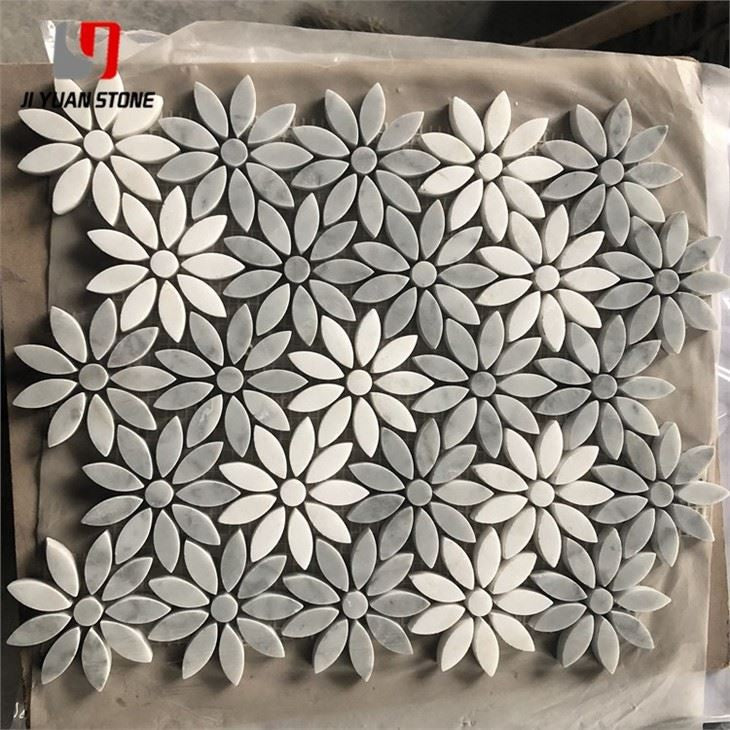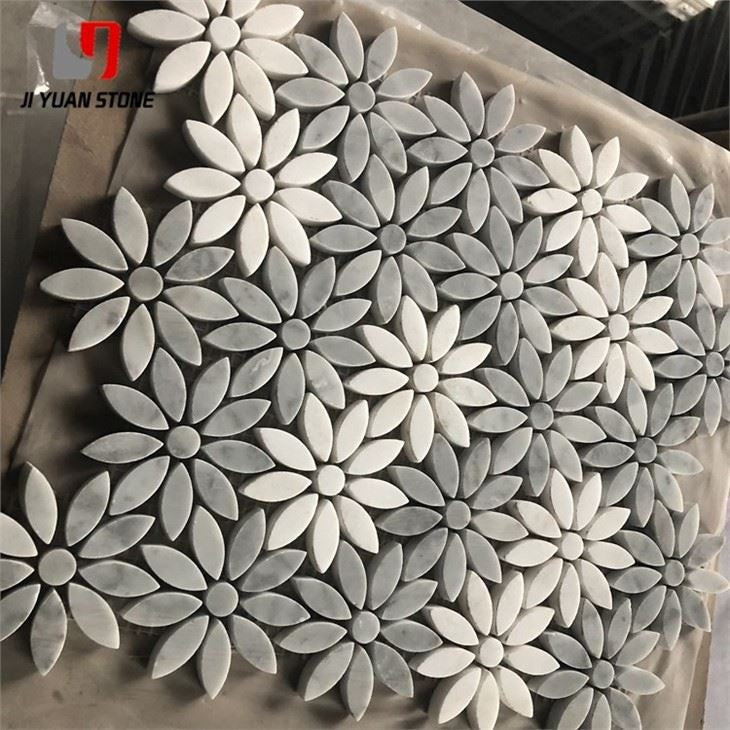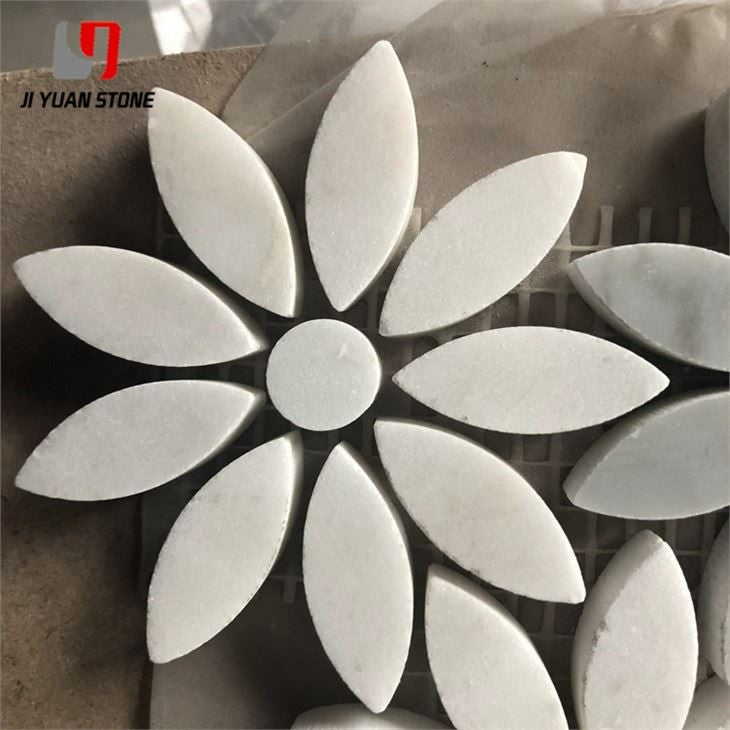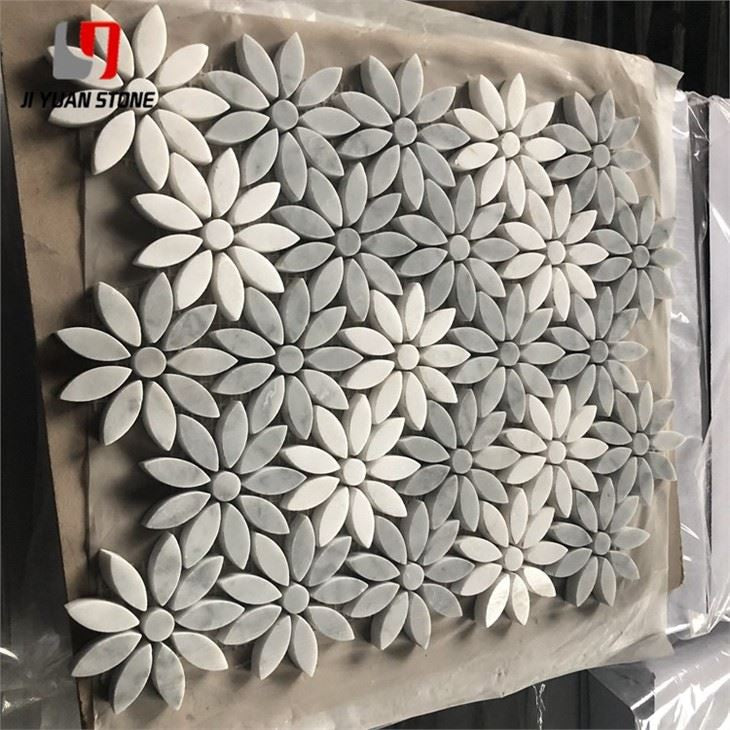White Gray Marble Flower Mosaic Tile
White Gray Marble Flower Mosaic Tile
This White Gray Marble Flower Mosaic Tile adds a touch of elegance to any space. Made with high-quality white and gray marble, this mosaic tile is both durable and aesthetically pleasing. Its unique flower pattern adds a beautiful focal point to any room.
| Feature | Details |
|---|---|
| Material | Natural Marble Stone,Travertine,Limestone |
| Colour | As pictures show or customized |
| Shape | Square, Basketweave, Mini brick, Modern brick, Herringbone, Subway, Hexagon, Octagon, Mixed, Grand fan, Penny round, Hand clipped, Tesserae, Random strip, River rocks, 3D cambered, Pinwheel, Rhomboid, Bubble round, Circle bubble, Stacked, etc... |
| MOQ | Unrestricted |
| Sheet Size | 279x295mm , All sizes can be customized |
| Chip Size | 48mm |
| Material | Natural Marble |
| Surface Finishing | Polished / Honed |
| Color | White |
| OEM&ODM | Accepted, different designs can be customized |
| Usage | Interior & exterior commercial and residencial Decoration, Kitchen,Bathroom ,Livingroom, etc. |
| Packing | Carton + Wooden Crate |
| Usage tips | 1.Marble tiles: Grout these tiles after drying the laying mortar / adhesive with a natural stone-suitable, polymer-coated joint ingenuity for absorbent materials. |
The Evolution of White Gray Marble Flower Mosaic Tile in Art and Architecture
The Renaissance and the Decline of Mosaic Art
With the Renaissance came a complex pursuit of detail, the rise of oil painting, and innovations in art materials and architectural styles. These advancements accelerated the decline of white gray marble flower mosaic tile, leading to a period of stagnation in mosaic art over the centuries of European civilization.
However, Renaissance artists faced a challenge—many of their masterpieces were difficult to preserve due to limitations in painting techniques, tools, and materials. To address this, courts commissioned craftsmen to collect various stones, shape them into small particles, and arrange them meticulously to replicate paintings. This method allowed the preservation of great artworks while also showcasing the artists' techniques in a new medium.
The 16th Century: The Revival of Mosaic Art
By the 16th century, glassmakers discovered methods to produce a vast range of tones in glass. As a result, some mosaic workshops were able to create up to 10,000 different color tones, allowing them to replicate paintings with remarkable precision. Mosaic art became increasingly detailed and complex, leading to the creation of many classic mosaic masterpieces that are still admired today.
Notable Mosaic Materials
- Glass Mosaic
- Stone Mosaic
Antoni Gaudí and the Revival of Mosaic in Architecture
During the 19th and 20th centuries, interest in mosaics had diminished since the 14th century, with their presence largely limited to monasteries. However, in late 19th-century Spain, the renowned architect Antoni Gaudí began integrating mosaics into architectural design, breathing new life into the art form.
One of his most famous mosaic creations is the swivel backrest mosaic chair in Park Güell, Barcelona, a classic masterpiece of architectural mosaic art. His innovative processing techniques introduced a new level of abstraction in architecture, seamlessly blending mosaic art with fluid, curved structures.
At the beginning of the 20th century, Gaudí, in collaboration with Josep Maria Jujol, designed Park Güell, which featured stunning applications of white gray marble flower mosaic tile, further cementing the role of mosaics in modern architecture.
Share
